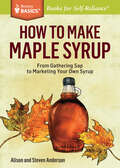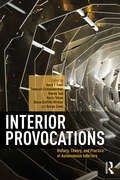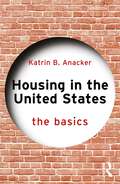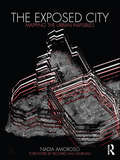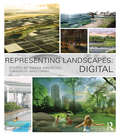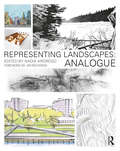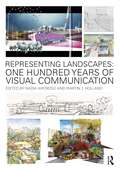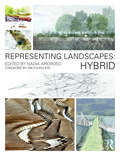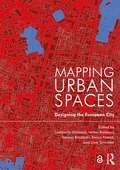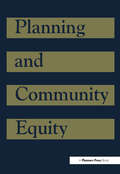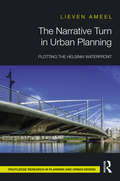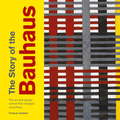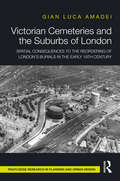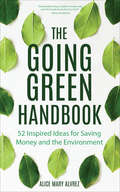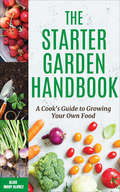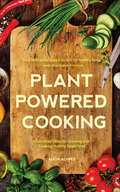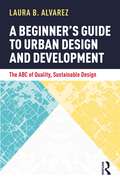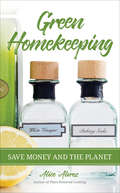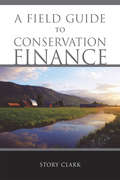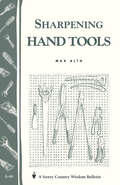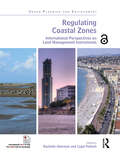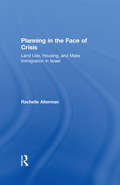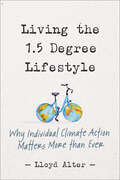- Table View
- List View
How to Make Maple Syrup: From Gathering Sap to Marketing Your Own Syrup. A Storey BASICS® Title (Storey Basics)
by Alison Anderson Steven AndersonThird-generation syrup makers Alison and Steven Anderson show you how to collect sap using a tree-friendly tubing system and then cook, package, and even market your own syrup. With expert advice for first-time bottlers, the Andersons share their passion with a contagious excitement that is as inspiring as a bowl of sugar on snow.
Interior Provocations: History, Theory, and Practice of Autonomous Interiors
by Anca I. Lasc, Deborah Schneiderman, Keena Suh, Karin Tehve, Alexa Griffith Winton, and Karyn ZieveInterior Provocations: History, Theory, and Practice of Autonomous Interiors addresses the broad cultural, historical, and theoretical implications of interiors beyond their conventionally defined architectural boundaries. With provocative contributions from leading and emerging historians, theorists, and design practitioners, the book is rooted in new scholarship that expands traditional relationships between architecture and interiors and that reflects the latest theoretical developments in the fields of interior design history and practice. This collection contains diverse case studies from the late eighteenth century to the twenty-first century including Alexander Pope’s Memorial Garden, Design Indaba, and Robin Evans. It is an essential read for researchers, practitioners, and students of interior design at all levels.
Housing in the United States: The Basics (The Basics)
by Katrin B. AnackerHousing matters to people, be they owner, renter, housing provider, homeless individual, housing professional, or policymaker. Housing in the United States: The Basics offers an accessible introduction to key concepts and issues in housing—and a concise overview of the programs that affect housing choices, affordability, and access in the United States today. Part I covers the fundamentals of housing: households, housing units, and neighborhoods; housing as basic need vs. human right; supply and demand; construction, rehabilitation, and renovation; and demographic, socioeconomic, and cultural trends. Part II focuses on housing policy and its evolution from the early 20th century, through the Great Recession to the present day; policies related to owner- and renter-occupied housing; tax policies and expenditures; place- and people-based programs; and shortages of affordable housing.Written in a clear and engaging style, this guide allows readers to quickly grasp the complex range of policies, programs, and factors that shape the housing landscape. Essential reading for students, community advocates, homebuyers/renters, and professionals with an interest in housing, it also serves as an ideal text for introductory courses in urban planning, urban studies, sociology, public administration, architecture, and real estate.This book provides a valuable and practical foundation for informed housing discussions at the kitchen table, in the classroom, at work, or on Capitol Hill.
The Exposed City: Mapping the Urban Invisibles
by Nadia AmorosoThere is a vast amount of information about a city which is invisible to the human eye – crime levels, transportation patterns, cell phone use and air quality to name just a few. If a city was able to be defined by these characteristics, what form would it take? How could it be mapped? Nadia Amoroso tackles these questions by taking statistical urban data and exploring how they could be transformed into innovative new maps. The "unseen" elements of the city are examined in groundbreaking images throughout the book, which are complemented by interviews with Winy Maas and James Corner, comments by Richard Saul Wurman, and sections by the SENSEable City Lab group and Mark Aubin, co-founder of Google Earth.
Representing Landscapes: Digital
by Nadia AmorosoMost landscape architectural designs now include some form of digital representation - but there is much more scope for creativity beyond the standard Photoshop montages. In this new book on representing landscapes, Nadia Amoroso brings together contributions from some of the leading landscape departments in the world to explore the variety in digital illustration methods. In each chapter, leading lecturers, professors and practitioners in the field of landscape architecture explain a specific digital approach with the use of images from their department to show how each technique can be used in inspirational examples. Throughout the book over 200 colour images cover the spectrum of digital representation to help discuss the various drawing types which are invaluable when communicating ideas in the field of landscape architecture. With worked examples in the chapters and downloadable images suitable for class use, this is an essential book for visual communication and design studios.
Representing Landscapes: Analogue (Representing Landscapes)
by Nadia AmorosoThe fourth book in Nadia Amoroso‘s Representing Landscapes series, this text focuses on traditional methods of visual representation in landscape architectural education. Building on from the previous titles in the series, which look at digital and hybrid techniques, Representing Landscapes: Analogue is a return to the basic foundations of landscape architecture’s original medium of visual communication. Each of the 20 chapters includes contributions from leading professors teaching studio and visual communication courses from landscape architecture programs across the globe, showcasing the best student examples of analog techniques. It demonstrates the process from graphics as a form of research, design development, and analysis, to the final presentation through drawings, models and descriptive captions of the methods, styles and techniques used. It features critical and descriptive essays from expert professors and lecturers in the field, who emphasise the importance of the traditional medium as an intrinsic part of the research, design and presentation process. Over 220 full colour images explore the range of visual approaches students and practitioners of landscape architecture can implement in their designs. With worked examples in the chapters and downloadable images suitable for class use, this is an essential book for visual communication and design studios.
Representing Landscapes: One Hundred Years of Visual Communication (Representing Landscapes)
by Nadia AmorosoThis volume provides an in-depth historical overview of graphic and visual communication styles, techniques, and outputs from key landscape architects over the past century. Representing Landscapes: One Hundred Years of Visual Communication offers a detailed account of how past and present landscape architects and practitioners have harnessed the power of visualization to frame and situate their designs within the larger cultural, social, ecological, and political milieux. The fifth book in the Representing Landscapes series, the presentations contained within each of the 25 chapters of this work are not merely drawings and illustrations but are rather graphic touchstones whose past and current influence shapes how landscape architects think and operate within the profession. This collected volume of essays gathers notable landscape historians, scholars, and designers to offer their insights on how the landscape has been presented and charts the development and use of new technologies and contemporary theory to reveal the conceptual power of the living medium of the larger landscape. Richly detailed with over 220 colour and black and white illustrations from some of the discipline’s best-known landscape architects and designers, this work is a ‘must-have’ for those studying contemporary landscape design or those fascinated by the profession’s history.
Representing Landscapes: Hybrid (Representing Landscapes)
by Nadia AmorosoHybrid and mixed media create a huge variety of diagramming and drawing options for landscape representation. From Photoshop mixed with digital maps, to hand drawings overlaid with photos and modelling combined with sketches, the possibilities are endless. In this book, Amoroso curates over 20 leading voices from around the world to showcase the best in contemporary hybrid design. With over 200 colour images from talented landscape architeture students, this book will explore the options, methods and choices to show the innovative approaches that are offered to students and practitioners of landscape architecture. With worked examples in the chapters and downloadable images suitable for class use, this is an essential book for visual communication and design studios.
Mapping Urban Spaces: Designing the European City
by Lamberto Amistadi Valter Balducci Tomasz Bradecki Enrico Prandi Uwe SchröderMapping Urban Spaces focuses on medium-sized European cities and more specifically on their open spaces from psychological, sociological, and aesthetic points of view. The chapters illustrate how the characteristics that make life in medium-sized European cities pleasant and sustainable – accessibility, ease of travel, urban sustainability, social inclusiveness – can be traced back to the nature of that space. The chapters develop from a phenomenological study of space to contributions on places and landscapes in the city. Centralities and their meaning are studied, as well as the social space and its complexity. The contributions focus on history and theory as well as concrete research and mapping approaches and the resulting design applications. The case studies come from countries around Europe including Poland, Italy, Greece, Germany, and France, among others. The book will be of interest to students, scholars, and practitioners in architecture, urban planning, and landscape architecture.
Planning and Community Equity: A Component of APA's Agenda for America's Communities
by American Institute of Certified PlannersThis thought-provoking book exhorts planners to establish community development programs that achieve greater social and economic equity. Some of the 13 chapters urge planners to incorporate community equity concerns into traditional planning areas such as transportation and economic development. Others challenge planners to get more involved in social areas such as urban education and community policing. Each chapter is authored by one or more professionals with expertise in the subject at hand. A helpful resource for planners who continue to tackle the problems of inequality.
The Narrative Turn in Urban Planning: Plotting the Helsinki Waterfront
by Lieven AmeelNarratives, in the context of urban planning, matter profoundly. Planning theory and practice have taken an increasing interest in the role and power of narrative, and yet there is no comprehensive study of how narrative, and concepts from narrative and literary theory more broadly, can enrich planning and policy. The Narrative Turn in Urban Planning addresses this gap by defining key concepts such as story, narrative, and plot against a planning backdrop, and by drawing up a functional typology of different planning narratives. In two extended case studies from the planning of the Helsinki waterfront, it applies the narrative concepts and theories to a broad range of texts and practices, considering ways toward a more conscious and contextualized future urban planning. Questioning what is meant when we speak of narratives in urban planning, and what typologies we can draw up, it presents a threefold taxonomy of narratives within a planning framework. This book will serve as an important reference text for upper-level students and researchers interested in urban planning.
The Story of the Bauhaus (The Story of ...)
by Frances AmblerNow 100 years old, the Bauhaus still looks just as fresh today as it did when it began. It was a place to experiment and embrace a new creative freedom. Thanks to this philosophy, the Bauhaus still shapes the world around us. Trace The Story of the Bauhaus through the 100 personalities, designs, ideas and events that shaped this monumental movement. Learn about leaders Paul Klee, Walter Gropius, Anni Albers and Wassily Kandinsky; witness groundbreaking events and wild parties that would revolutionise contemporary design; and discover a range of innovative ideas and new ways of thinking.
The Story of the Bauhaus (The\story Of ... Ser.)
by Frances AmblerNow 100 years old, the Bauhaus still looks just as fresh today as it did when it began. It was a place to experiment and embrace a new creative freedom. Thanks to this philosophy, the Bauhaus still shapes the world around us. Trace The Story of the Bauhaus through the 100 personalities, designs, ideas and events that shaped this monumental movement. Learn about leaders Paul Klee, Walter Gropius, Anni Albers and Wassily Kandinsky; witness groundbreaking events and wild parties that would revolutionise contemporary design; and discover a range of innovative ideas and new ways of thinking.
Victorian Cemeteries and the Suburbs of London: Spatial Consequences to the Reordering of London’s Burials in the Early 19th Century
by Gian Luca AmadeiThis book explores how Victorian cemeteries were the direct result of the socio-cultural, economic and political context of the city, and were part of a unique transformation process that emerged in London at the time. The book shows how the re-ordering of the city’s burial spaces, along with the principles of health and hygiene, were directly associated with liberal capital investments, which had consequences in the spatial arrangement of London. Victorian cemeteries, in particular, were not only a solution for overcrowded graveyards, they also acted as urban generators in the formation London’s suburbs in the nineteenth century. Beginning with an analysis of the conditions that triggered the introduction of the early Victorian cemeteries in London, this book investigates their spatial arrangement, aesthetics and functions. These developments are illustrated through the study of three private Victorian burial sites: Kensal Green Cemetery, Highgate Cemetery and Brookwood Cemetery. The book is aimed at students and researchers of London history, planning and environment, and Victorian and death culture studies.
The Going Green Handbook: 52 Inspired Ideas for Saving Money and the Environment
by Alice Mary AlvrezEasy, healthy, money-saving DIY ideas for a sustainable lifestyle Inspired living for the environment: Make your footprint planet-positive. With the gentle guidance of eco-expert, Alice Mary Alvrez, you can start with baby steps and progress to living the green good life! Level up your eco-knowledge with these 52 creative ideas and easy ways to reduce your waste, eat organic, and keep toxins out of your home. Grow organic, reduce waste, live toxin-free, and save money: Inside this helpful and hopeful guide, you'll find tips for greening up all the areas of your life. Learn surprising facts about your impact on the environment and change your habits with do-it-yourself ideas. Start with small, simple changes and work your way up to raising chickens, planting a bee-friendly garden, and growing organic veggies instead of a high maintenance grass lawn. Also find easy composting tips and recipes for toxin-free homemade eco cleansers and paint. A DIY handbook for all levels: Whether you want to be a green rookie or an eco-master, you can help the planet every week of the year. The Going Green Handbook is an inspiring and instructive guide to living the handmade life by consuming less and creating more. Use little, live big! Readers will learn: why we live the way we do and how we can become less wasteful and greener tips, tricks and secrets for a self-sufficient sustainable home and lifestyle starter garden tips for growing your own healthy food, fruit, veggies, and fresh herbs how to save money by going green Save money, be inspired, and go green with this helpful and easy handbook!
The Starter Garden Handbook: A Cook's Guide to Growing Your Own Food
by Alice Mary AlvrezThe author of The Going Green Handbook gives you tips for growing vegetables, reducing your food budget, eating organic, and being eco-friendly. Here in one pretty package is everything you need to know to have your garden and eat it, too! Inside, you’ll find tips for greening up all areas of your garden. Learn surprising facts about your impact on the environment and change your habits with do-it-yourself ideas in The Starter Garden Handbook. Organic gardener, environmentalist, and pop-up chef Alice Mary Alvrez will help you start with small changes, like growing basic herbs, and work your way up to raising bees. Learn how to raise many kinds of vegetables and fruits, and get tips on composting weeds, clippings, and leftovers so you have nutrient-rich soil. Whether you are at the green rookie level, eco-master, or full-on gardening guru, you can learn to grow your own food and help the planet every week of the year with The Starter Garden Handbook. If you’re a fan of The Vegetable Gardener’s Bible, you’ll love The Starter Garden Handbook! “Nowadays people think they have to quit their day job and toil in the hot sun all day. Not true! Most gardening is in the planning and once you have established your plot, I promise you, it will become your Happy Place. Nothing feels better than serving a delicious dish from plants you grew from seeds.” —Susannah Seton, author of Simple Pleasures of the Garden
The Starter Garden Handbook: A Cook's Guide to Growing Your Own Food
by Alice Mary AlvrezThe author of The Going Green Handbook gives you tips for growing vegetables, reducing your food budget, eating organic, and being eco-friendly. Here in one pretty package is everything you need to know to have your garden and eat it, too! Inside, you’ll find tips for greening up all areas of your garden. Learn surprising facts about your impact on the environment and change your habits with do-it-yourself ideas in The Starter Garden Handbook. Organic gardener, environmentalist, and pop-up chef Alice Mary Alvrez will help you start with small changes, like growing basic herbs, and work your way up to raising bees. Learn how to raise many kinds of vegetables and fruits, and get tips on composting weeds, clippings, and leftovers so you have nutrient-rich soil. Whether you are at the green rookie level, eco-master, or full-on gardening guru, you can learn to grow your own food and help the planet every week of the year with The Starter Garden Handbook. If you’re a fan of The Vegetable Gardener’s Bible, you’ll love The Starter Garden Handbook! “Nowadays people think they have to quit their day job and toil in the hot sun all day. Not true! Most gardening is in the planning and once you have established your plot, I promise you, it will become your Happy Place. Nothing feels better than serving a delicious dish from plants you grew from seeds.” —Susannah Seton, author of Simple Pleasures of the Garden
Plant Powered Cooking: 52 Inspired Ideas for Growing and Cooking Yummy Good Food
by Alice AlvrezOrganic gardener, environmentalist, and pop-up chef Alice Mary Alvrez wants to make it as easy as possible to reduce your footprint, grow and eat fabulous organic vegetables, and maintain a planet-positive, animal-friendly lifestyle. As she says, “I like to make it so simple that it’s brain-free so you don’t even have to think about it any more, you fall in love with a healthier and greener way of life.” Her book, Plant Powered Cooking is simply brimming with brilliant ideas you can use from tips for growing your own food (even if you have a hard time keeping houseplants alive), shopping and cooking techniques for every mealtime, and even low-labor secrets for harvesting and canning the bounty from your own garden. Learn surprising facts about the impact of meat and animal products on the environment and how even small do-it-yourself ideas lead to real impact. Begin with small changes such as “Meat-free Mondays,” then eliminate all meat out of your diet and replace it with beautiful food grown by your own hand. With Alvrez’s Plant Powered Cooking, you and your family will be living the good life.
A Beginner's Guide to Urban Design and Development: The ABC of Quality, Sustainable Design
by Laura B. AlvarezThis book provides invaluable guidance to all those with an interest in placemaking and the built environment, from those with no experience to those who have worked for many years in industry, illustrating key principles that will secure higher quality, more sustainable design in accessible, jargon-free language. The author explains the design process in a straightforward way, exploring the different roles and highlighting the opportunities and limitations different agencies have to influence design over the various stages of the process. Examples from the UK and worldwide look at how the system operates and how best practice can make a real difference on the ground. Case studies examine situations where quality or sustainability fell short – and how this could have been avoided. This book also showcases a variety of evaluation tools, explaining how they operate, and giving guidance on how to create project-specific tools to drive schemes forward. With community empowerment at its core, the book explains technical language and shares bountiful knowledge to broaden place democracy and make influencing design accessible to many, not just a few. This is a book that brings together all the various parties involved in shaping the built environment, demonstrating that collaboration and mutual understanding are key to achieving better quality, more sustainable design.
Green Homekeeping: Save Money and the Planet
by Alice AlvarezFifty ways to make your home a sustainable and eco-friendly environment.Every decision you make, large and small, has an impact on the environment. This concise guide shows how you can make your daily impact planet-positive. With sections progressing from simple tips to deeper commitments, you can start with baby steps and move on to advanced eco-warrior!Discover dozens of inspired ideas that show how to:*Reduce your waste*Eat organic*Keep toxins out of your home*Compost leftover food*Shop wisely, and much more
A Field Guide to Conservation Finance
by Roger C. Altman Story ClarkFinally, a comprehensive book on land conservation financing for community and regional conservation leaders. A Field Guide to Conservation Finance provides essential advice on how to tackle the universal obstacle to protecting private land in America: lack of money. Story Clark dispels the myths that conservationists can access only private funds controlled by individuals or that only large conservation organizations have clout with big capital markets. She shows how small land conservation organizations can achieve conservation goals using both traditional and cutting-edge financial strategies. Clark outlines essential tools for raising money, borrowing money, and reducing the cost of transactions. She covers a range of subjects including transfer fees, voluntary surcharges, seller financing, revolving funds, and Project Related Investment programs (PRIs). A clear, well-written overview of the basics of conservation finance with useful insights and real stories combine to create a book that is an invaluable and accessible guide for land trusts seeking to protect more land.
Sharpening Hand Tools: Storey's Country Wisdom Bulletin A-66
by Max AlthSince 1973, Storey's Country Wisdom Bulletins have offered practical, hands-on instructions designed to help readers master dozens of country living skills quickly and easily. There are now more than 170 titles in this series, and their remarkable popularity reflects the common desire of country and city dwellers alike to cultivate personal independence in everyday life.
Regulating Coastal Zones: International Perspectives on Land Management Instruments (Urban Planning and Environment)
by Rachelle Alterman Cygal PellachRegulating Coastal Zones addresses the knowledge gap concerning the legal and regulatory challenges of managing land in coastal zones across a broad range of political and socio-economic contexts. In recent years, coastal zone management has gained increasing attention from environmentalists, land use planners, and decision-makers across a broad spectrum of fields. Development pressures along coasts such as high-end tourism projects, luxury housing, ports, energy generation, military outposts, heavy industry, and large-scale enterprise compete with landscape preservation and threaten local history and culture. Leading experts present fifteen case studies among advanced-economy countries, selected to represent three groups of legal contexts: signatories to the 2008 Mediterranean ICZM Protocol, parties to the 2002 EU Recommendation on Integrated Coastal Zone Management, and the USA and Australia. This book is the first to address the legal-regulatory aspects of coastal land management from a systematic cross-national comparative perspective. By including both successful and less-effective strategies, it aims to inform professionals, graduate students, policy makers, and NGOs of the legal and socio-political challenges as well as the better practices from which others could learn.
Planning in the Face of Crisis: Land Use, Housing, and Mass Immigration in Israel (Cities And Regions Ser.)
by Rachelle AltermanCritics of urban and regional planning argue that it is best suited to manage incremental change. Can a planner's skills and expertise be effective in handling a major crisis and large-scale change? The mass immigration from the former Soviet Union to Israel in the 1990s offers the opportunity to study one of the largest-scale (non-disaster) crisis situations in a democratic, advanced-economy country. This book recounts the fascinating saga of how policymakers and planners at both the national and local levels responded to the formidable demand for housing and massive urban growth. Planners forged new housing and land-use policies, and applied a streamlined (but controversial) planning law. The outputs were impressive. The outcomes and impacts changed the landscape and human-scape of Israel, heightening dilemmas of land use and urban policy in this high-density country.
Living the 1.5 Degree Lifestyle: Why Individual Climate Action Matters More than Ever
by Lloyd AlterStop thinking about efficiency and start thinking about sufficiency Living the 1.5 Degree Lifestyle reveals the carbon cost of everything we do, identifying where we can make big reductions, while not sweating the small stuff.The international scientific consensus is that we have less than a decade to drastically slash our collective carbon emissions to keep global heating to 1.5 degrees and avert catastrophe. This means that many of us have to cut our individual carbon footprints by over 80% to 2.5 tonnes per person per year by 2030. But where to start?Drawing on Lloyd Alter's journey to track his daily carbon emissions and live the 1.5 degree lifestyle, coverage includes:What it looks like to live a rich and truly green lifeFrom take-out food, to bikes and cars, to your internet usage – finding the big wins, ignoring the trivial, and spotting marketing ploysThe invisible embodied carbon baked into everything we own and why electric cars aren't the answerHow to start thinking about sufficiency rather than efficiencyThe roles of individuals versus governments and corporations.Grounded in meticulous research and yet accessible to all, Living the 1.5 Degree Lifestyle is a journey toward a life of quality over quantity, and sufficiency over efficiency, as we race to save our only home from catastrophic heating.
